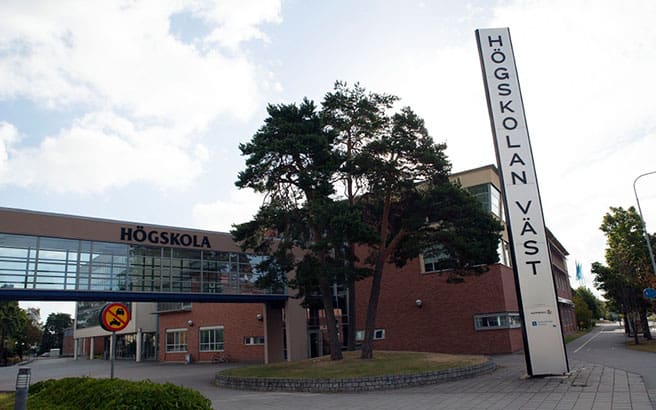The latest report from the Swedish Higher Education Authority (UKÄ) shows that 32 per cent of research and teaching staff in the higher education sector were employed on fixed-term contracts in 2022.
The corresponding percentage in the labour market as a whole was just under 16 per cent. Seen over a 15-year period, the proportion of people in temporary employment at higher education institutions has decreased, however.
“In 2008, 63 per cent of staff had permanent positions, and now the proportion is 68 per cent,” says the report’s author, Elina Stengård, a researcher at UKÄ . “But over the past ten years, the percentage has been fairly stable.”
“In 2008, 63 per cent of staff had permanent positions, and now the proportion is 68 per cent,” says the report’s author, Elina Stengård, a researcher at UKÄ . “But over the past ten years, the percentage has been fairly stable.”
There are many forms of fixed-term employment. Some are regulated by either the Higher Education Ordinance or collective agreements, including career development positions, while others are regulated by the Employment Protection Act, (LAS). To some extent, the distribution of these positions seems to be a zero-sum game, and there appears to have been redistribution within the thicket of different types of temporary employment.
One example is the new provisions in the Employment Protection Act that came into effect in 2022. These mean that special fixed-term employment now automatically becomes permanent employment after twelve months instead of after two years, which was the case previously.
The report found that from 2021 to 2022, the proportion of other types of temporary employment increased instead. This may indicate that higher education institutions have found new forms of temporary employment that are not based on the provisions set out in the Act.
“Based on the statistics after one year, these changes in the rules seem to have led to fixed-term employment based on the stipulations of the Employment Protection Act becoming a smaller proportion of limited-term employment in the sector,” says Stengård. But she adds that it is too early to see whether the change is permanent.

Elina Stengård
Researcher, UKÄ
In the past, it has been reported that many researchers and teachers in the higher education sector have been employed on fixed-term contracts for longer periods of time and that different types of fixed-term employment are being accumulated one after another.
This report states that by 2022, both permanent and fixed-term employees will have an average of approximately three years of fixed-term employment behind them.
The author of the report points out that this may mean that temporary employees are subsequently given permanent employment, but it may also be a sign that people with temporary employment are leaving the sector.
Something that suggests the latter is that of those people who left jobs in higher education for jobs in other sectors in Sweden, around 73 per cent were on fixed-term contracts before they left their jobs at universities or colleges.
In general, there are very large differences between different subject areas. In most research subject areas, the majority leave academia immediately after completing their doctorate, but it is possible that many of those in the natural sciences continue with research in another country.
Figures for those who obtained a doctorate in 2015 show that it is only in the social sciences, the humanities and the arts that it is more common to continue with an academic career in Sweden than to leave academia directly after completing a doctorate. Within those subject areas, only 28 per cent left higher education immediately.
In the social sciences, people can also get a permanent job significantly faster compared with other subject areas. Just two years after completing their doctorate, 40 per cent had a permanent job.
In the other research subject areas, it took at least four years to reach similar levels, and in the natural sciences, only around 32 per cent had permanent jobs after seven years. That suggests that they have had a number of different temporary positions during those years.
Previously, more women than men had fixed-term employment. Nowadays, there is no difference between the percentages of women and men in temporary employment at an overall level.
But there are differences in the type of fixed-term employment they have. It is slightly more common for women to have fixed-term employment or temporary employment in accordance with the Employment Protection Act, while men have fixed-term positions based on the special regulations that apply to the higher education sector to a greater extent.
“The gender differences are probably largely due to the fact that there are more women in the social sciences, humanities and arts,” says Elina Stengård. “And within those subject areas, fixed-term positions are more common.”
The report states that a high proportion of externally funded research seems to lead to a high proportion of employees with fixed-term contracts.
Consequently, this is also linked to subject areas, where science, technology, medicine and health science have 35–38 per cent temporary employees, while social sciences have 25 per cent and humanities and arts have around 27 per cent.
“If you have externally funded research, then the funding is more often for a shorter period of time, and then it is probably easier to bring in someone temporarily than to employ a person permanently.”
The relationship between external funding and temporary employment is extremely clear if we look at forms of employment per higher education institution.
At one end of the scale are research-heavy institutions, with Chalmers at the top with 50 per cent of employees in fixed-term employment, closely followed by the Stockholm School of Economics, Karolinska Institutet, the Swedish Defence University, Linköping University and the Royal Institute of Technology, all with well over 40 per cent temporary employees.
At the other end of the scale are a number of teaching-heavy newer universities and regional colleges, from Linnaeus University, with 80 per cent of employees in permanent employment, to Kristianstad University with 96 per cent permanent employees.


















